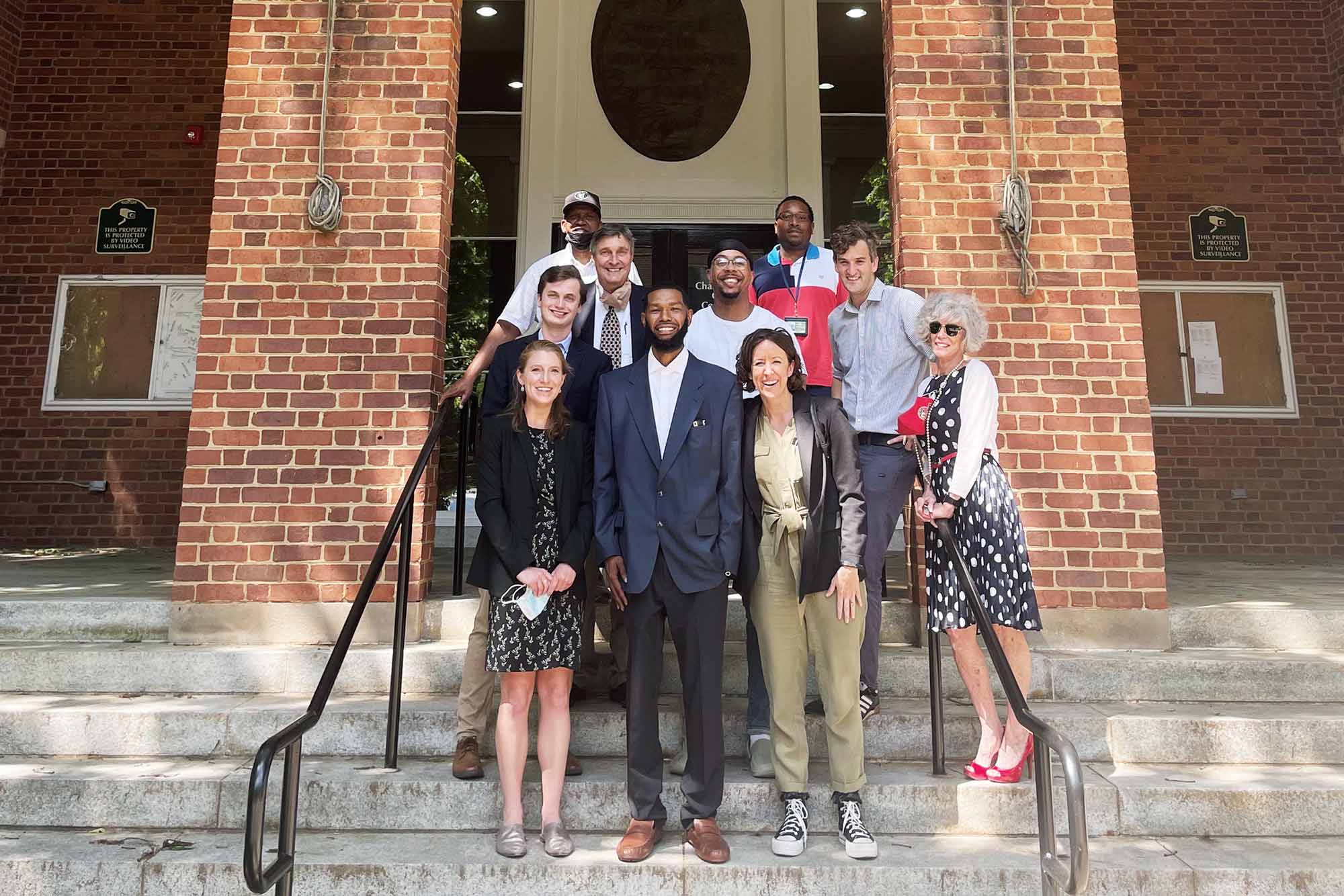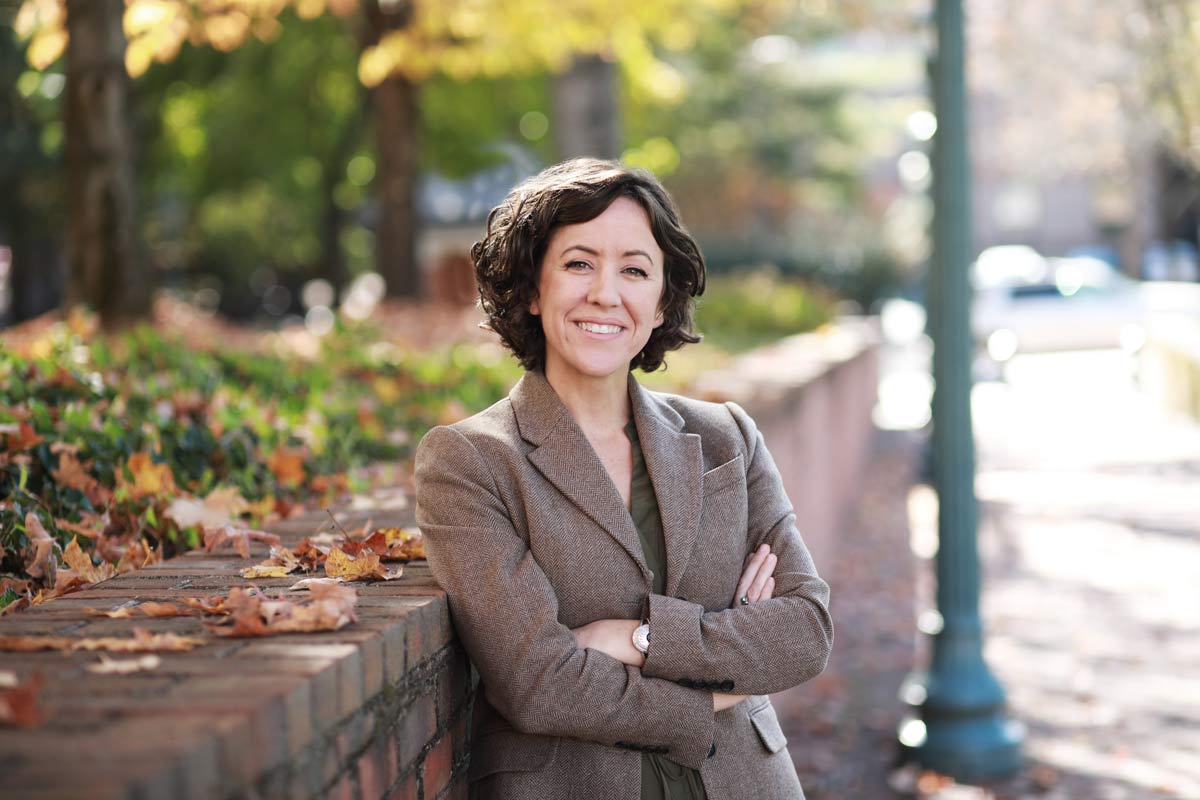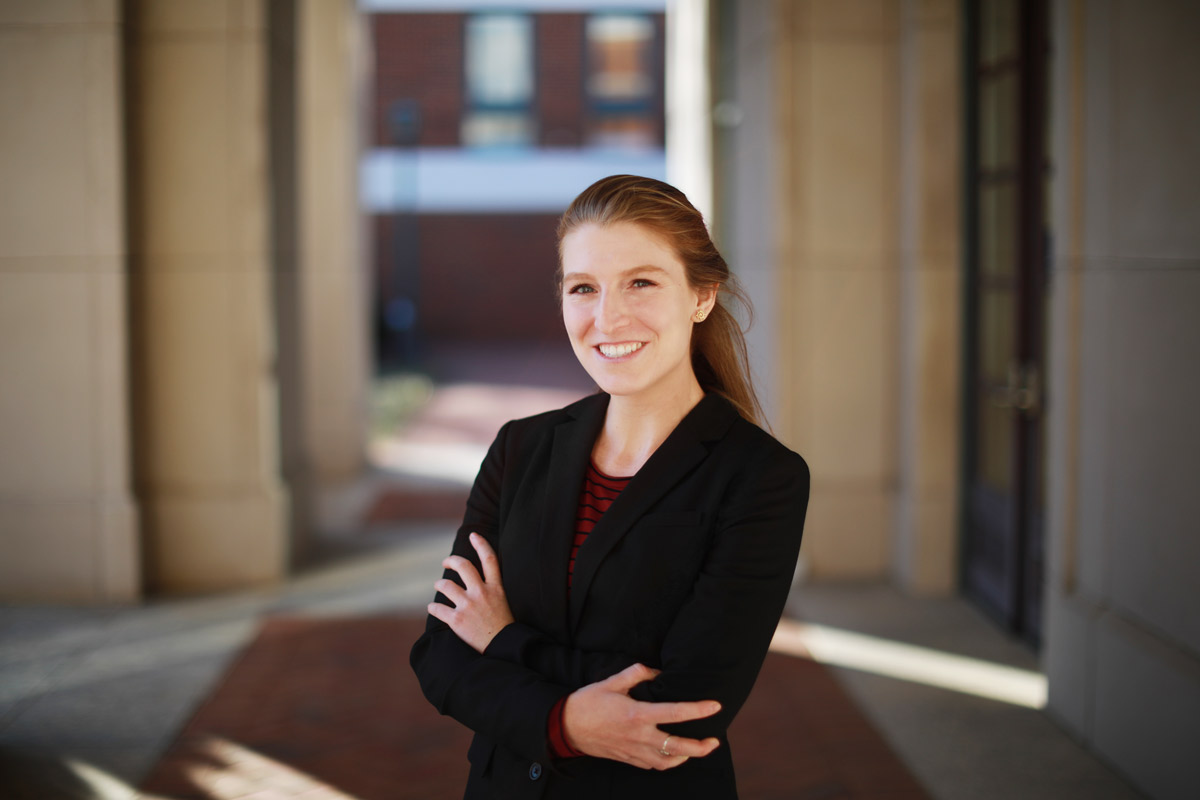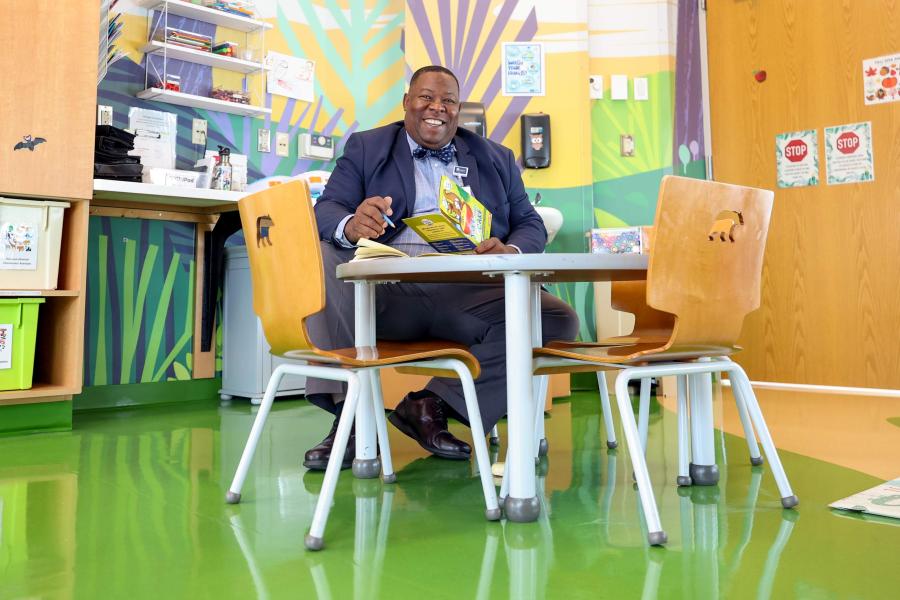With the assistance of clinic student Meredith Kilburn, Merrick’s Second Amendment right was restored May 17. Gilliam’s was restored May 26.
On Merrick’s behalf, Kilburn submitted a 33-page petition to the Charlottesville Circuit Court, including letters of support from city employees and the parent educator at a local nonprofit that, among other things, helps men become better fathers after their release from jail. Merrick volunteers at that nonprofit, ReadyKids, and became a board member in 2021.
“All the clients we worked with were absolutely phenomenal people,” Kilburn said.
Helping them regain firearm rights “didn’t even feel like a hard issue for me, because it was clear they deserve every right that every other citizen has, because they do just as much – if not more – for Charlottesville and the community than other people who do have all their rights,” she said.
Merrick, for instance, has put his incarceration and reentry experience to constructive use, by mentoring others. In addition to volunteering at the REAL Dads program at ReadyKids, he founded the Freedom for Felons movement to provide opportunities to formerly incarcerated people who are reentering society, and he hosts a podcast highlighting success stories among this population. Gilliam, serves on the District 9 Re-Entry Steering Committee, works at the Home to Hope program (which provides job training to the previously incarcerated) and volunteers with the Thomas Jefferson Area Crisis Intervention Team.
The Decarceration and Community Reentry Clinic aims to create more of these success stories. With 45,000 laws in the United States regulating people living with convictions – including where they can live and work, how they can engage in the financial sector and with friends and family, and what resources they can access – the need is great.







